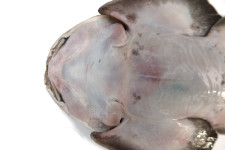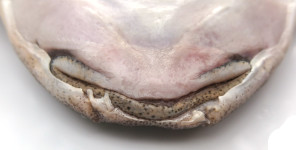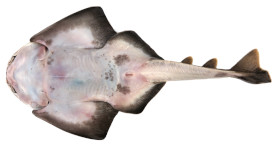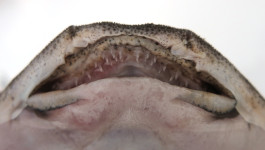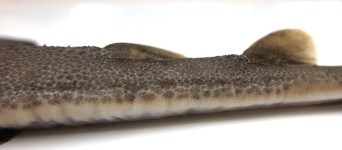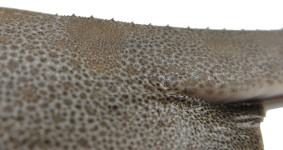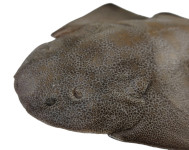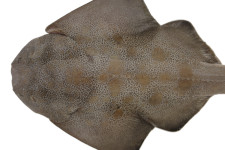Squatina japonica
Bleeker, 1858
Japanese angelshark
Classification: Elasmobranchii Squatiniformes Squatinidae
Reference of the original description
Vierde bijdrage tot de kennis der ichthyologische fauna van Japan. Verhandelingen der Natuurkundige Vereeniging in Nederlandsch Indië, 3(10), 1–46
Vierde bijdrage tot de kennis der ichthyologische fauna van Japan. Verhandelingen der Natuurkundige Vereeniging in Nederlandsch Indië, 3(10), 1–46
Image of the original description
No image in first description.
No image in first description.
Synonyms / new combinations and misspellings
Rhina japonica, Squatina cf. japonica
Rhina japonica, Squatina cf. japonica
Description :
Citation: Squatina japonica Bleeker, 1858: In: Database of modern sharks, rays and chimaeras, www.shark-references.com, World Wide Web electronic publication, Version 12/2025
Please send your images of "Squatina japonica" to info@shark-references.com
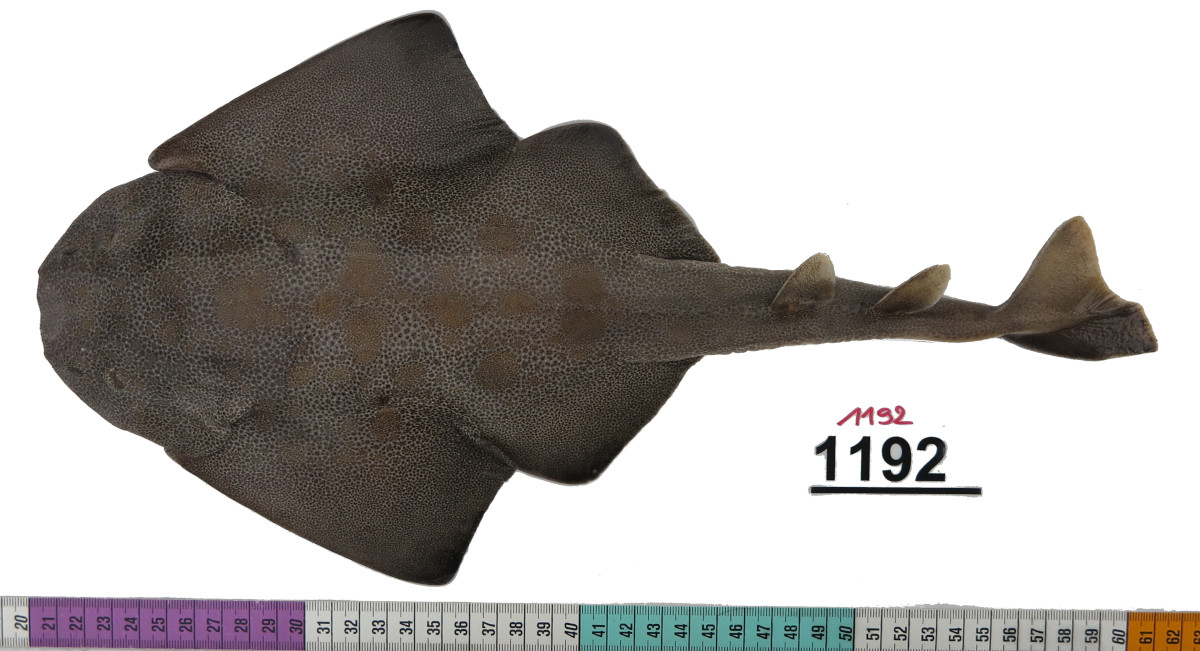
Squatina japonica Bleeker, 1858, ERB 1192, female, 39,9 cm TL, Japan © Frederik H. Mollen (Elasmobranch Research Belgium)

Squatina japonica Bleeker, 1858, ERB 1192, female, 39,9 cm TL, Japan © Frederik H. Mollen (Elasmobranch Research Belgium)
Common names
 Angelote japonés,
Angelote japonés,  Ange de mer Kasuzame,
Ange de mer Kasuzame,  Change angel shark,
Change angel shark,  Change canopy shark,
Change canopy shark,  Japanese angel shark,
Japanese angel shark,  Japanese angelfish,
Japanese angelfish,  Japanese monkfish
Japanese monkfish
 Angelote japonés,
Angelote japonés,  Ange de mer Kasuzame,
Ange de mer Kasuzame,  Change angel shark,
Change angel shark,  Change canopy shark,
Change canopy shark,  Japanese angel shark,
Japanese angel shark,  Japanese angelfish,
Japanese angelfish,  Japanese monkfish
Japanese monkfish
Short Description
Japanese angelshark Squatina japonica has broad pectoral fins with rounded free rear tips, posterior margin nearly straight, inner margin strongly convex; nasal barbels simple and spatulate. Anterior nasal flaps smooth to weakly fringed; dermal folds on sides of head without lobes. Rear tip of inner margin of pelvic fins considerably anterior to origin of first dorsal; very short hypocercal tail. Rows of moderately large spines on midline of back and tail from head to dorsal fins and between fin bases, and on snout and above eyes. Body color blackish brown with small dark and pale spots; no ocelli (eye-like spot) [518] (Ref. 31369) [1658]. Dorsal spines (total): 0; Anal spines: 0.
Japanese angelshark Squatina japonica has broad pectoral fins with rounded free rear tips, posterior margin nearly straight, inner margin strongly convex; nasal barbels simple and spatulate. Anterior nasal flaps smooth to weakly fringed; dermal folds on sides of head without lobes. Rear tip of inner margin of pelvic fins considerably anterior to origin of first dorsal; very short hypocercal tail. Rows of moderately large spines on midline of back and tail from head to dorsal fins and between fin bases, and on snout and above eyes. Body color blackish brown with small dark and pale spots; no ocelli (eye-like spot) [518] (Ref. 31369) [1658]. Dorsal spines (total): 0; Anal spines: 0.
Human uses
Fisheries: minor commercial
Fisheries: minor commercial
Biology
A little-known angelshark, found on or near the bottom [518]. Lives in sandy ground. A carnivore that eats benthic animals [17641]. Ovoviviparous [733]. Utilized for human consumption and for preparation of shagreen [518].
A little-known angelshark, found on or near the bottom [518]. Lives in sandy ground. A carnivore that eats benthic animals [17641]. Ovoviviparous [733]. Utilized for human consumption and for preparation of shagreen [518].
Remarks
shark-references Species-ID=6927;
shark-references Species-ID=6927;
Parasites (arranged by Jürgen Pollerspöck)
Cestoda
Copepoda
Isopoda
Cestoda
- Phyllobothrium marginatum Yamaguti, 1934 [16458] [16443] [34140]
- Tylocephalum squatinae Yamaguti, 1934 [16458]
Copepoda
- Eudactylina squatini Izawa, 2011 [14349]
- Trebius shiinoi Nagasawa, Tanaka & Benz, 1998 [7624] [19421] [34148]
Isopoda
- Gnathia trimaculata Coetzee, Smit, Grutter & Davies, 2009 [17188]








